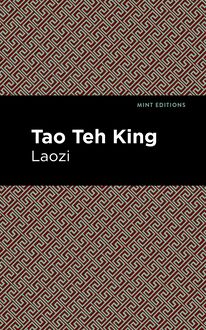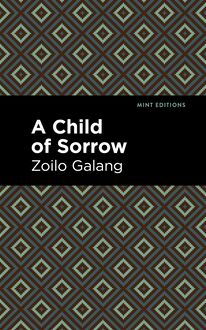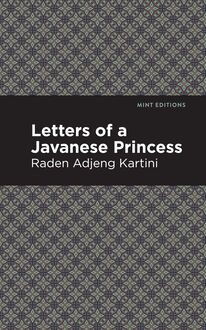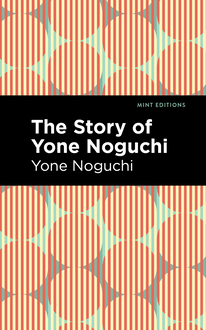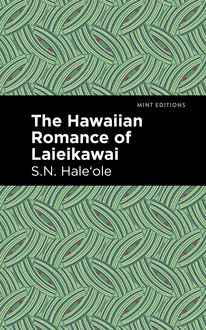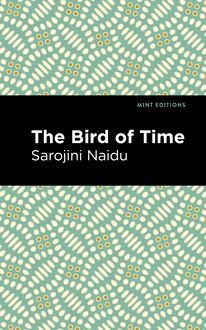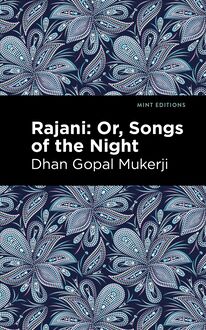-
 Univers
Univers
-
 Ebooks
Ebooks
-
 Livres audio
Livres audio
-
 Presse
Presse
-
 Podcasts
Podcasts
-
 BD
BD
-
 Documents
Documents
-
- Cours
- Révisions
- Ressources pédagogiques
- Sciences de l’éducation
- Manuels scolaires
- Langues
- Travaux de classe
- Annales de BEP
- Etudes supérieures
- Maternelle et primaire
- Fiches de lecture
- Orientation scolaire
- Méthodologie
- Corrigés de devoir
- Annales d’examens et concours
- Annales du bac
- Annales du brevet
- Rapports de stage
La lecture à portée de main
Vous pourrez modifier la taille du texte de cet ouvrage
Découvre YouScribe en t'inscrivant gratuitement
Je m'inscrisDécouvre YouScribe en t'inscrivant gratuitement
Je m'inscrisEn savoir plus
Vous pourrez modifier la taille du texte de cet ouvrage
En savoir plus

Description
A Daughter of the Samurai (1925) is an autobiography by Etsu Inagaki Sugimoto. Born in Japan, she was sent to the United States to fulfill an arranged marriage with a Japanese merchant. Raised in a family whose prominence had fallen toward the end of the feudal era, Sugimoto gained a unique perspective on Japanese life that would shape her literary career and outlook as a professor at New York’s Columbia University. “Japan is often called by foreign people a land of sunshine and cherry blossoms. […] In the province of Echigo, where was my home, winter usually began with a heavy snow which came down fast and steady until only the thick, round ridge-poles of our thatched roofs could be seen.” Born and raised in a northern province of Japan, Etsu Inagaki Sugimoto came from a family of high-ranking samurai officials. Originally prepared to live as a priestess, Etsu became the center of her father’s attention when her brother eloped and left for America. No longer financially stable, Sugimoto’s father depended on his children to secure their family’s future. Soon, he arranged for his daughter to marry a successful merchant living in Ohio, sending her to Tokyo to study at a Methodist school. Then, she made the journey across the ocean to start a new life in America. With a beautifully designed cover and professionally typeset manuscript, this edition of Setsuko Hirakawa’s A Daughter of the Samurai is a classic of Japanese American literature reimagined for modern readers.
Sujets
Informations
| Publié par | Mint Editions |
| Date de parution | 28 septembre 2021 |
| Nombre de lectures | 1 |
| EAN13 | 9781513293578 |
| Langue | English |
| Poids de l'ouvrage | 3 Mo |
Informations légales : prix de location à la page 0,0500€. Cette information est donnée uniquement à titre indicatif conformément à la législation en vigueur.
Extrait
A Daughter of the Samurai
Etsu Inagaki Sugimoto
A Daughter of the Samurai was first published in 1925.
This edition published by Mint Editions 2021.
ISBN 9781513290720 | E-ISBN 9781513293578
Published by Mint Editions®
minteditionbooks.com
Publishing Director: Jennifer Newens
Design & Production: Rachel Lopez Metzger
Project Manager: Micaela Clark
Typesetting: Westchester Publishing Services
With respect and love and deepest gratitude I dedicate these sacred memories
to
M Y T WO M OTHERS
whose lives and environments were far apart, yet whose hearts met in mine
C ONTENTS A CKNOWLEDGMENT I NTRODUCTION I. W INTERS IN E CHIGO II. C URLY H AIR III. D AYS OF K AN IV. T HE O LD AND THE N EW V. F ALLING L EAVES VI. A S UNNY N EW Y EAR VII. T HE W EDDING T HAT N EVER W AS VIII. T WO V ENTURES IX. T HE S TORY OF A M ARIONETTE X. T HE D AY OF THE B IRD XI. M Y F IRST J OURNEY XII. T RAVEL E DUCATION XIII. F OREIGNERS XIV. L ESSONS XV. H OW I B ECAME A C HRISTIAN XVI. S AILING U NKNOWN S EAS XVII. F IRST I MPRESSIONS XVIII. S TRANGE C USTOMS XIX. T HINKING XX. N EIGHBOURS XXI. N EW E XPERIENCES XXII. F LOWER IN A S TRANGE L AND XXIII. C HIYO XXIV. I N J APAN A GAIN XXV. O UR T OKYO H OME XXVI. T RAGIC T RIFLES XXVII. H ONOURABLE G RANDMOTHER XXVIII. S ISTER ’ S V ISIT XXIX. A L ADY OF O LD J APAN XXX. T HE W HITE C OW XXXI. W ORTHLESS T REASURES XXXII. T HE B LACK S HIPS
A CKNOWLEDGMENT
To Nancy Virginia Austen
W hose pleasant friendship, energetic spirit, and practical knowledge encouraged me to believe that a little Etsu-bo, with a heart full of love for old Japan, could gather the falling fragments of samurai spirit and weave them into a fragrant chain for the readers of today.
I NTRODUCTION
T here are many happy adventures for those who work in the strange world of printers’ ink; and in some lucky moment of inspiration, several years ago, I asked Mrs. Sugimoto to write, for my column in a Philadelphia newspaper, some little memories of her girlhood in Japan. The story of the dog Shiro, whose prosperity in a future life she endangered by giving him her own cushion; her childish sadness about her curly hair; her pensive trouble when she discovered that American women were not really more modest than Japanese—these and a few other charming episodes first found their way into print in that newspaper, and gradually led to this beautiful and thrilling book. It is an honour to be asked by Mrs. Sugimoto to say a word of introduction here. I only wish that I knew how to make it ceremonious enough. For the inner suggestion of her book is surely that life in its highest moments is a kind of ceremony in honour of the unknown gods. “The eyelids of a Samurai,” Mrs. Sugimoto tells us, “know not moisture.” But the “red barbarians,” who have not learned the old stoic art, may be forgiven if they feel occasionally, among her tender paragraphs, that dangerous prickling that great truth conveys.
What a lovely book it is, and how much it has to teach us. I have a secret notion that it will go on for years and years, making friends for itself and for the brave woman who wrote it, and also—this would please her most—friends for Japan. Is it pot a perfect book for children to read? I don’t know any collection of fairy tales more entrancing. And for parents too: is it not the subtlest kind of treatise on education? For the pure art and humour and simplicity of the narrative: where is there a more charming short story than that of Mr. Toda? A great American writer, who was in many things as far as possible from the old Samurai codes (Walt Whitman), said, “As soon as histories are properly told there is no more need of romances.” This book is a history properly told. Some of us may think that Mrs. Sugimoto has been even a little too generous toward the America she adopted. But she came among us as Conrad came among the English; and if the little Etsu-bo, the well-loved tomboy of snowy winters in Echigo, finds beauty in our strange and violent ways, we can only be grateful.
Among her delicate and significant anecdotes, each a gem of artistic thought and feeling, she tells of the Japanese fianc é e whose betrothed had a plum-blossom as his family crest, and therefore the young woman must pay particular honour to that flower, and could not even eat plum jelly, which would be disrespectful to the emblem of her future husband. In the same way I feel obscurely that I must not write too much about Mrs. Sugimoto: because I honour her greatly, to write fulsomely here would be disrespectful to her beautiful book. I can only say that this story of a Japanese girlhood and of the brave child who found a seed of liberty stirring in her heart seems to me one of those rare triumphs where two diverse worlds speak openly to one another and both are profited.
One of my pleasantest memories of a time when Mrs. Sugimoto, in her Japanese costume, accompanied as a great lady should be by her daughter and a loved companion, came far downtown in hot weather to visit me in a New York newspaper office. She felt, though surely too generously, that I had tried to be courteous; and this required, on her part, a gesture of appreciation. I have never forgotten it: her gay little figure, charming as a bird or flower in her vivid robe, brightening for a few minutes that busy, noisy place. What the expedition may have cost her, in weariness or alarm or secret distresses, I hesitate to conjecture. Only a brave and great-minded person would have ventured it. That she is brave and great minded and a true daughter of the Samurai no reader will ever doubt. How startled, I suppose, some of her knightly ancestors would be to find her putting her private thoughts on paper for all the world to see. Then indeed the shrines would be pasted up and there would be horrified silence. But it was that old, hard and feudal code that gave her strength to break through paper formalities when she felt it needful. She has given us here a unique picture of the exquisite complexity and beauty of all human life. She is a great teacher, and I would not willingly even tread on her shadow.
C HRISTOPHER M ORLEY
I
W INTERS IN E CHIGO
J apan is often called by foreign people a land of sunshine and cherry blossoms. This is because tourists generally visit only the eastern and southern parts of the country, where the climate is mild all the year round. On the northwest coast the winters are long, snow often covering the ground from December to March or April.
In the province of Echigo, where was my home, winter usually began with a heavy snow which came down fast and steady until only the thick, round ridge-poles of our thatched roofs could be seen. Then groups of coolies, with straw mats over their shoulders and big woven hats that looked like umbrellas, came and with broad wooden shovels cut tunnels through from one side of the street to the other. The snow was not removed from the middle of the street all winter. It lay in a long pile, towering far above the house-tops. The coolies cut steps, for they were carrying snow at intervals all winter, and we children used to climb up and run along the top. We played many games there, sometimes pretending we were knights rescuing a snow-bound village, or fierce brigands stealing upon it for an attack.
But a still more exciting time for us was before the snow came, when the entire town was making preparations for winter. This always took several weeks, and each day as we went to and from school we would stop to watch the coolies busily wrapping the statues and small shrines along the streets in their winter clothing of straw. The stone lanterns and all the trees and bushes of our gardens were enclosed in straw, and even the outside walls of the temples were protected by sheets of matting fastened on with strips of bamboo, or immense nettings made of straw rope. Everyday the streets presented a new appearance, and by the time the big carved lions at the temple steps were covered, we were a city of grotesque straw tents of every shape and size, waiting for the snow that would bury us in for three or four months.
Most large houses had thatched roofs with wide eaves, but the shops on the streets had shingled roofs weighted with stones to prevent avalanches when the snow began to melt in the spring. Above all the sidewalks extended a permanent roof, and during the winter the sidewalks were enclosed by walls of upright boards with an occasional panel of oiled paper, which turned them into long halls, where we could walk all over town in the stormiest weather, entirely protected from wind and snow. These halls were dim, but not dark, for light shines through snow pretty well, and even at the street corners, where we crossed through the snow tunnels, it was light enough for us to read good-sized characters. Many a time, coming home from school, I have read my lessons in the tunnel, pretending that I was one of the ancient sages who studied by snow-light.
Echigo, which means “Behind the Mountains,” is so shut off from the rest of Japan by the long Kiso range that during the early feudal days it was considered by the Government only a frozen outpost suitable as a place of exile for offenders too strong in position or influence to be treated as criminals. To this class belonged reformers. In those days Japan had little tolerance for reforms either in politics or religion, and an especially progressive thinker at court or a broad-minded monk was branded as equally obnoxious and sent to some desolate spot where his ambitions would be permanently crushed. Most political offenders that were sent to Echigo either filled the graves of the little cemetery beyond the execution ground or lost themselves in some simple home among the peasants. Our literature holds many a pathetic tale of some rich and titled youth, who, disguised as a pilgrim, wanders through the villages of Echigo, searching for his lost father.
The relig
-
 Univers
Univers
-
 Ebooks
Ebooks
-
 Livres audio
Livres audio
-
 Presse
Presse
-
 Podcasts
Podcasts
-
 BD
BD
-
 Documents
Documents
-
Jeunesse
-
Littérature
-
Ressources professionnelles
-
Santé et bien-être
-
Savoirs
-
Education
-
Loisirs et hobbies
-
Art, musique et cinéma
-
Actualité et débat de société
-
Jeunesse
-
Littérature
-
Ressources professionnelles
-
Santé et bien-être
-
Savoirs
-
Education
-
Loisirs et hobbies
-
Art, musique et cinéma
-
Actualité et débat de société
-
Actualités
-
Lifestyle
-
Presse jeunesse
-
Presse professionnelle
-
Pratique
-
Presse sportive
-
Presse internationale
-
Culture & Médias
-
Action et Aventures
-
Science-fiction et Fantasy
-
Société
-
Jeunesse
-
Littérature
-
Ressources professionnelles
-
Santé et bien-être
-
Savoirs
-
Education
-
Loisirs et hobbies
-
Art, musique et cinéma
-
Actualité et débat de société
- Cours
- Révisions
- Ressources pédagogiques
- Sciences de l’éducation
- Manuels scolaires
- Langues
- Travaux de classe
- Annales de BEP
- Etudes supérieures
- Maternelle et primaire
- Fiches de lecture
- Orientation scolaire
- Méthodologie
- Corrigés de devoir
- Annales d’examens et concours
- Annales du bac
- Annales du brevet
- Rapports de stage

